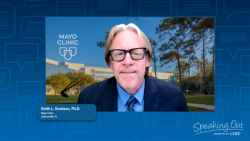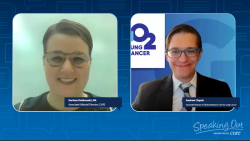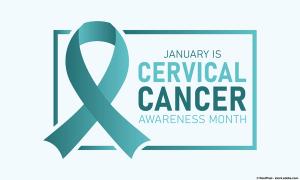Addressing Barriers to Care, Improving Access in Women’s Cancers
As part of its Speaking Out video series, CURE spoke with Dr. Navya Nair, on behalf of the Foundation for Women’s Cancer, about access to care in women’s cancer.
Kristie L. Kahl: To start, can you discuss what some of the barriers to care are that we see with gynecologic cancers?
Dr. Navya Nair: Absolutely. Unfortunately, for many of our patients, we do see a number of barriers, whether that's to the diagnosis or to actual cancer treatment. One of the big barriers actually can be educational. So, for example, knowing that something is abnormal, such as postmenopausal bleeding, which spoiler alert is always abnormal, and always needs to be worked out. Other barriers can be related to accessing care, like geography, just living very far away from a health care system. Sometimes financial and insurance barriers, stop people, language barriers, and for our younger patients, sometimes even child care issues. What you do with your kid when you need to go to an appointment. And for many of our marginalized societies, sometimes there's a barrier in the sense that there isn't trust in the health care system, or the health care system hasn't done a good job in getting the trust of certain patient populations. So these are some of the barriers that we see every day.
Kahl: Absolutely. And so we hear a lot about how far we've come when it comes to treatment and things like that. But why are we still seeing these barriers?
Nair: One of the big reasons, in my opinion is that our system is so good at taking care of really complicated or end-stage disease processes, but we're not so good at preventing diseases. Our preventative care systems and keeping people healthy aren't as well designed to get into every population. So, you know, whether it's certain urban populations or rural populations, our health care system just isn't as good at taking care of patients before they get sick. But rather, we're very good at taking care of people once they have a diagnosis.
Kahl: Absolutely. And so what are we doing to try to address some of these challenges? And can you also talk about Move the Message which the national awareness campaign through the foundation?
Nair: Absolutely. So one of the big initiatives that the Foundation for Women's Cancer is doing as this national campaign called Move the Message, it aims to increase awareness of the five gynecological cancers, which include cervical, ovarian, endometrial, and uterine cancers, vaginal and vulvar cancers, and it's specifically designed to target on historically marginalized communities such as Black and Brown women as well as those living in rural areas. One of the big messages is just raising awareness about what's going on. Every five minutes, a woman is diagnosed with one of the five gynecological cancers. And that results in over 109,000 Americans with a new diagnosis each year. Many of our patients, unfortunately, aren't diagnosed until later stages of disease, which is why we're trying to increase awareness so that we can prevent cancer whenever possible, but if not, going to at least catch it at an earlier stage where it's more curable.
Kahl: How can we help to keep driving this education around, these barriers to care?
Nair: Yeah, so there's a lot that you can access for free on the websites, if you go to movethemessage.org there are some great educational materials available to educate yourself, share with others. There's also a hashtag for the Move the Message campaign. You can post some of these awareness videos and tag five friends and encourage them to continue that process to really spread the word, the Foundation for Women's Cancer and the Society of Gynecologic Oncology, also a really welcoming to like-minded health care advocates and community-based organizations. They're really looking to partner with community organization to spread the message. So if this is something that you're interested in, the Foundation for Women's Cancer is very welcoming.
Transcription edited for clarity and conciseness.
Related Content
 Lymphedema Myths and Misconceptions, From Exercise to Blood Draws
Lymphedema Myths and Misconceptions, From Exercise to Blood DrawsNovember 13th 2024
 A Survivor and Her Running Shoes
A Survivor and Her Running ShoesSeptember 13th 2018
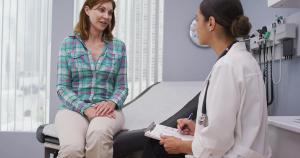 Cancer Brought Me to Sharon in Wonderland
Cancer Brought Me to Sharon in WonderlandMarch 23rd 2024
 Keytruda Has Received Nearly 40 FDA Approvals. How Does It Work?
Keytruda Has Received Nearly 40 FDA Approvals. How Does It Work?January 25th 2024
View additional resources on CureToday.com
